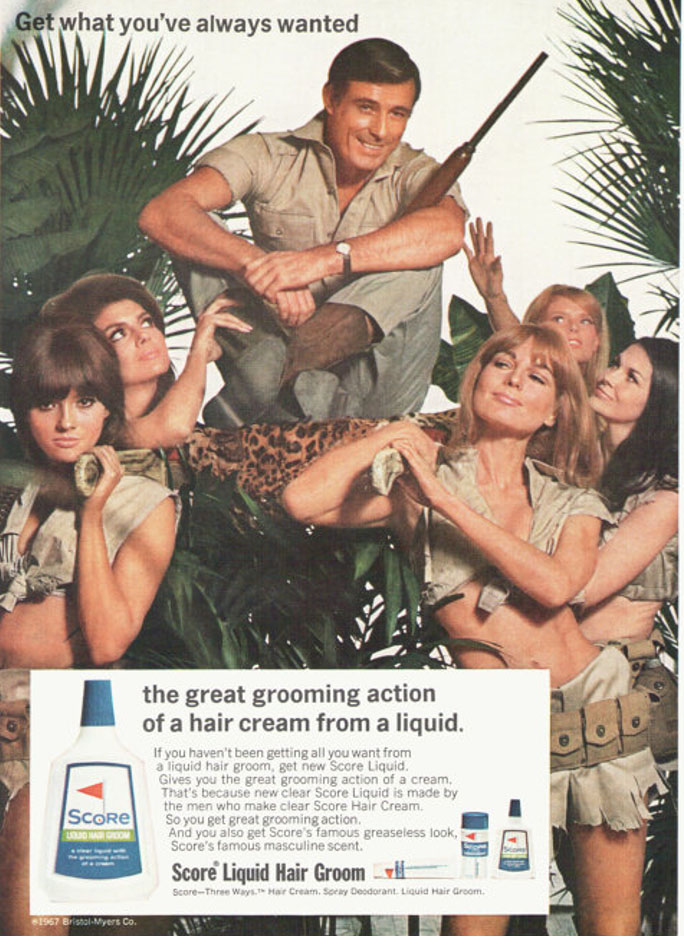Advertising and Marketing – Score pre-1970 product.
This is a targeted CSP and needs to be studied with reference to two elements of the Theoretical Framework (MEDIA LANGUAGE and MEDIA REPRESENTATION) and all relevant contexts.
TASK 1: look at the CSP below and use some of the starting points provided to make your first post. Make this post broad and contextual (ie get as much information as you can) but divide up your responses in terms of: 1) MEDIA LANGUAGE & 2) MEDIA REPRESENTATION

Media Language
Detailed study of Score should enable students to develop an understanding of the dynamic and changing relationships between media forms, products and audiences. Analysis should include:
- Mise-en-scene analysis
- Production values and Aesthetics
- Semiotics: how images signify cultural meanings
- How advertising conventions are socially and historically relative
- The way in which media language incorporates viewpoints and ideologies
Narrative
- How does Score construct a narrative which appeals to its target audience
- How and why audience responses to the narrative of this advert may have changed over time
- How does this advert create desire for the product
- Techniques of Persuasion
- Students should be able to demonstrate knowledge and understanding of the persuasive techniques used in the advert and issues surrounding brand values, brand message, brand personality and brand positioning should inform the analysis
Media Representations
Discussion of the Score advertisement will focus mainly on representation of gender including
- The processes which lead media producers to make choices about how to represent social groups
- How audience responses to interpretations of media representations reflect social, cultural and historical attitudes
- The effect of historical contexts on representations
- Theories of representation including Hall
- Theories of gender performativity including Butler
- Feminist theories including bel hooks and van Zoonen
- Theories of identity including Gauntlett
Historical, social and cultural contexts
The Score hair cream advert is an historical artefact from 1967, as such it can be examined productively by considering its historical, social and cultural contexts, particularly as it relates to gender roles, sexuality and the historical context of advertising techniques. 1967 can be seen as a period of slow transformation in western cultures with legislation about and changing attitudes to the role of women – and men – in society, something that the advert can be seen to negotiate.
Produced in the year of decriminilasiation of homosexuality the representation of heterosexuality could be read as signaling more anxiety than might first appear. The reference to colonialist values can also be linked to social and cultural contexts of the ending of Empire (see this link).
In comparison, Men’s Health magazine represents a notable social and cultural shift in expectations of contemporary masculinity (a shift which could be usefully compared with the advert for Score Hair cream). The study of Men’s Health can be linked to social and cultural contexts through reference to body image and changes in what society deems acceptable and unacceptable representations.
http://areejsmediablog1.blogspot.com/2018/03/advertising-score-case-study-and-wider.html
Similarly, comparisons with Maybelline campaign and Oh! magazine would be useful in exploring a range of different theoretical ideas and approaches: feminist critical thinking, postcolonialism, postmodernism.
https://www.campaignlive.co.uk/article/why-brands-need-change-approach-marketing-masculinity/1442291
https://www.thedrum.com/news/2016/07/13/boy-can-brands-gender-and-new-masculinity
The advertising techniques of fifty years could be compared to those of today. For example, references could be made with the Lynx Effect advert and the Specsavers adverts (both from 2010) which received criticism from the ASA, read this link or this link. And again reference to body image and changes in what society deems acceptable and unacceptable representations. So have ideas and acceptance around representation of gender really changed since the 1960’s?
Task 2: Create 1-2 slides that look at this CSP from 1 of the following critical perspective: (save as jpeg and upload to blog). Be prepared to show this in class and talk about it.
>feminist critical thinking
>postcolonialism
>postmodernism
>narrative
>social / historical backdrop
Task 3: 1 lesson formal mock exam (hand written, silence, no notes)
Task 4: create a parody or pastiche (ie postmodernism) of the Score advert from you particular theoretical perspective – I will explain . . . But you MUST use photoshop. Create 1 or 2 products.

